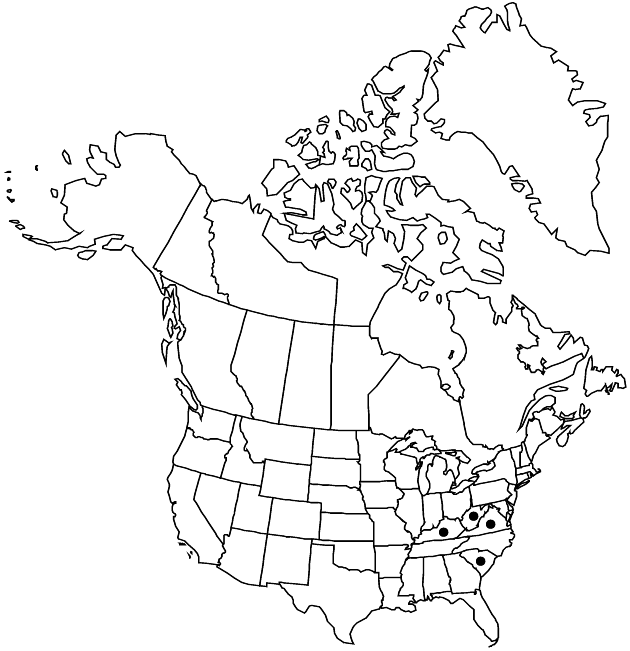Solidago faucibus
Sida 20: 1596, fig. 1. 2003.
Plants 75–150 cm; caudices branching. Stems 1, erect, glabrous proximal to (and usually into proximal portions of) arrays. Leaves: basal and proximal present at flowering, abruptly tapering to winged petioles, blades ovate, 100–200 × 80–120 mm, broadly tapering to truncate or slightly cordate (rarely) bases, margins singly or doubly serrate (teeth 1–3 (–6) mm); mid to distal cauline subsessile to sessile, blades lanceolate, 130–200 × 45–85 mm, progressively reduced distally, margins serrate (teeth 1–3 mm), abaxially glabrous, adaxially scabrous-hispidulous at least along margins. Heads 40–70, inconspicuously secund on longer branches, appearing fasciculate on shorter branches, borne in variable arrays, mostly narrow elongate and secund, consisting of axillary and terminal racemiform branches, or wider and compound, consisting of multiple array branches, proximally leafy-bracted, branches and peduncles (2.5–) 4 (–13) cm, hairy. Peduncles 2–5 mm (4–13 mm on South Carolina plants). Involucres campanulate, 4.5–6 (–7) mm. Phyllaries (10–18) in 4–6 series, ascending, lanceolate, broadly acute to obtuse, glabrous except for fimbriate-ciliate margins towards tip. Ray-florets 4–6; laminae 2.2–3.5 × 0.8–1.7 mm. Disc-florets 5–7 (–11); corollas 4–5.6 mm, lobes 1.6–2.5 mm. Cypselae 2.5–3.2 mm, short hairy at least on distal half; pappi 3–4.7 mm. 2n = 90.
Phenology: Flowering Aug–Oct.
Habitat: Mesic deciduous forests and hardwood-hemlock stands on stream terraces and adjacent proximal slopes (especially rocky, often with seepage), limestone river bluffs, mixed hardwoods over mafic rock
Elevation: 300–700 m
Distribution

Ky., S.C., Va., W.Va.
Discussion
In the Appalachian Plateau and Ridge and Valley physiographic provinces, Solidago faucibus shows a marked preference for gorgelike areas where rivers and creeks are entrenched in the surrounding terrain. It occurs in much more mesic sites than other taxa in the S. arguta complex.
Selected References
None.